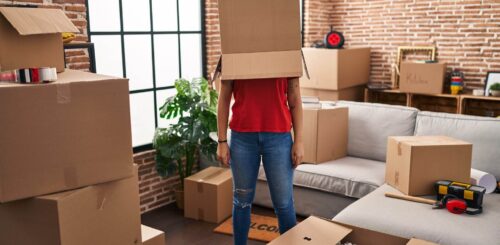You’ve finally tackled how to pack, but now you’re starting to wonder how to unpack after moving. As if the issue wasn’t bad enough before, now you’ll be living in a new home with a different layout and have no idea where to start. We have some awesome unpacking tips for that occasion.
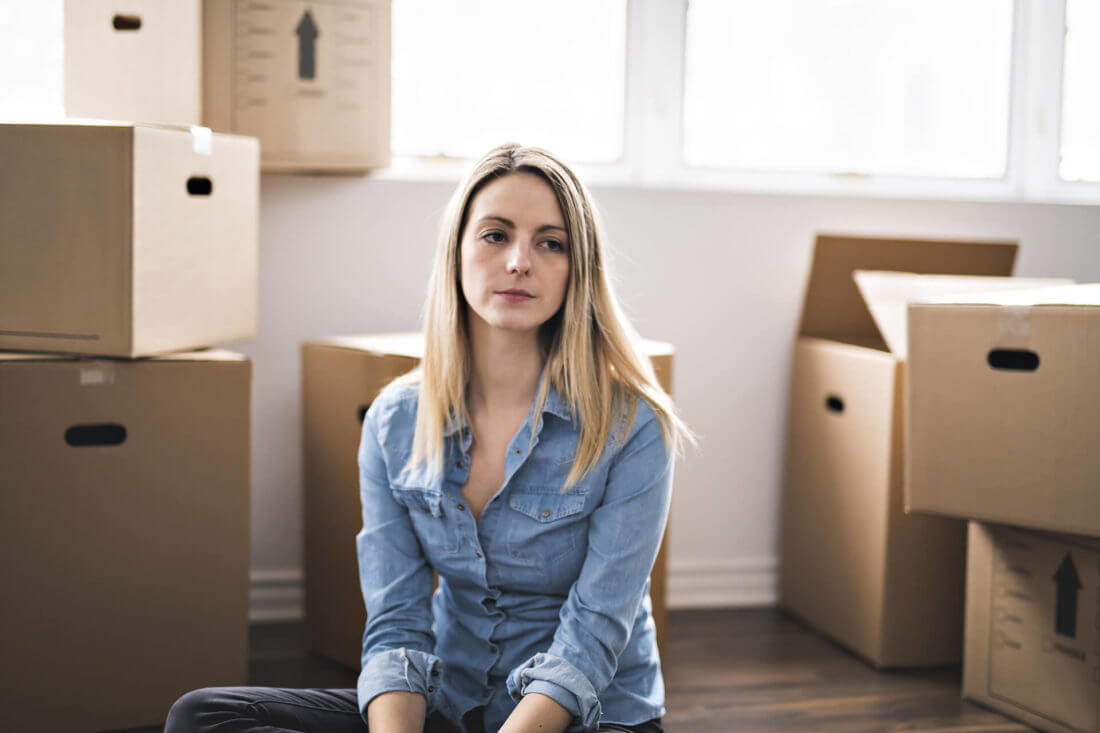

If you learn how to move, you’ll quickly learn how to settle in and start fresh. Whether you’ve relocated for love and plan on beginning an exciting chapter in your life or were promoted and had to relocate for a job, the process of unpacking everything is the initial step towards settling in and becoming a citizen of your new residence. Even something seemingly small, like relocating to a college dorm where you’ll most likely be sharing space with someone unknown, is still a big change. For that occasion, we suggest you prepare some questions to ask potential roommates. Now let’s see how to unpack after a move.
If You’re Reading This Before Packing, Make Sure You Take the Steps That’ll Help You Unpack
This may be a long shot, but perhaps you’re creating some sort of super-organized checklist for relocating to a new state and want to have all your bases covered. If you are that sort of person, then relocating won’t be a big problem for you; just don’t let the anxiety about going out of state get to you.
The First Thing that Will Help You Unpack is Having an Essentials Box
Bringing an essentials box or boxes is a vital step for a few reasons. Firstly, it’s meant to contain all the necessities for the first few days (or even weeks) of your stay at the new home. This will make the unboxing process more comfortable, but it’s very often the most commonly forgotten thing to pack. For example, the list of necessities should go something like this:
- Toiletries – putting the necessary items for hygiene is high on the list of things to pack into an essential kit because nothing’s more difficult than running out of toilet paper or soap when you most need it,
- Food and cutlery – you’re bound to get hungry from all the unboxing and relocating, but you probably won’t be able to make cooked meals in the first few days. That’s why it’s vital to pack some foods that can last a long time and sustain you,
- Linens – you should put your bed down before using the linens, but having some emergency sheets and pillowcases will be the most important thing you pack for a comfortable night at your new place,
- Tools – you’ll need these in case there’s stuff that needs fixing around the house, but also for the unpacking process,
- Clothes and shoes – you’ll pack a suitcase for sure, but bring some comfortable outfits for your first few days of permanently going away from home, too.
How to Unpack After a Move With Ease – Label Your Boxes Before Moving Out
Another action that’ll make the unboxing way easier is labeling your cargo properly and on time. Containers with fragile cargo need to be labeled as such because they’ll be handled with care by long-distance movers and anyone else trying to carry them. After the move, the labels on the boxes will help you sort out the cargo and then distribute it properly across the rooms. You don’t want to end up having your plates and glasses in the bedroom at the end of a long week of relocating with the pets and driving across the country.


How to Unpack After Moving and In What Order
We’ve mentioned some things you shouldn’t miss doing during the packing process, and now, hoping that you’ve done them, you can take the time to unpack. Now that your idea of relocating from a small town to a big city has come true, you can make the unboxing process all about that adjustment. The same goes for relocating to a small town, because no matter the change, it will take time to get used to everything.
One of the Best Unpacking Tips – Unpack the Essential Box Before Anything Else
Assuming you’ve brought a well-packed survival box full of essential stuff for the first few days of relocating to a warmer climate or anywhere else, the time for opening it comes as soon as you land at the new house. Here lies the answer to the question, “Where do I start unpacking after moving.” Don’t be surprised by this, because you’ll need all the necessary toiletries and linens sooner than you might think.
Move on to Furniture and Unpack It in Its Designated Room
Hopefully, you’ve done a home inventory before packing up, and now you know precisely what you have and what goes where. If you’ve hired cross-country movers to help you relocate, that’s a good thing because they also assemble furniture as a part of their long-distance moving services. That way, you can simply tell them what goes where, and they’ll ensure that your furniture is all in the right place.
If you decide to assemble your furniture yourself, ensure you’re doing that in the room you want it to be in. That’s simply the easiest way to begin the unboxing process and have it as stress-free as possible. Assembling the couch wherever it lands is quite a big relocation mistake, so be sure you don’t make it.
It’s Best to Leave the Small Things and Clutter for Last Before the Long-Distance Moving Company Arrives
While a couch and a bed fall under the first apartment essentials list, so do towels, forks, and books in your decor. However, they’re not the first things to unbox when you’re finished relocating; they’re more likely to be the last things to take out of the boxes. However, fragile items are exceptions to the rule, but only if there are lots of them. You can unbox them just as soon as you’re done laying out the furniture. Clutter and decorations are the final touches for making your space personalized and feel more like home.
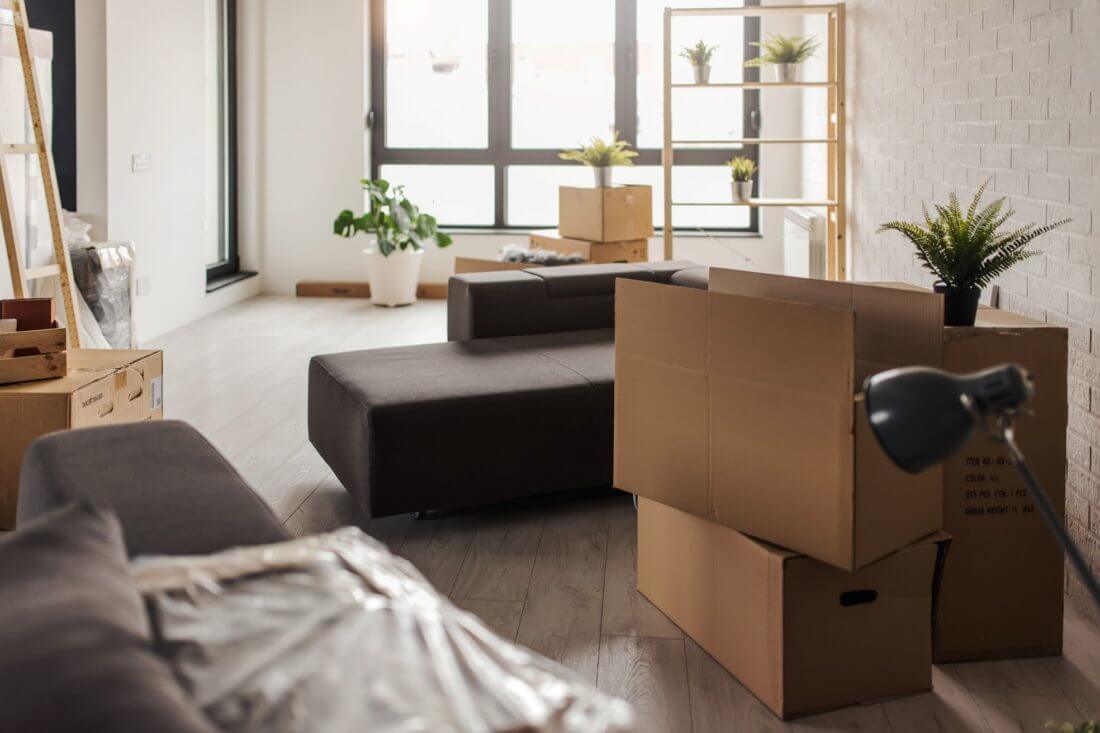

If You Want to Go From Room to Room When Unpacking After a Move, Here’s How
Another one of the great tips for unpacking after a move is to do it room by room. Consider what’s the most important area for you, the one you’ll be using first, and the most out of all spaces in the beginning. For some, it would be the kitchen, while for others, the bathroom or the office.
One of the Best Tips for Unpacking After a Move Is to Begin by Unboxing the Kitchen and the Appliances
If you had some unwanted appliances before packaging, which you’ve decided to donate, and you’re arriving at your next house with appliances already there, then the unboxing process won’t take that long. It’s also one of the great tips on how to save for relocating out of state. However, if you pack the stove and microwave for your next kitchen, then ensure they’re the first ones to get unpacked. There are manuals on how to unpack a stove and set it up to function properly.
After setting up the appliances, ensure that they’re clean by giving them a sweep. Do the same with all the drawers and cabinets because unloading all the kitchen items into dusty storage spaces doesn’t seem clean or sanitary. The second thing to unbox is the fragile dishes and glassware because they shouldn’t sit in the boxes for long. That increases the risk of them breaking, so ensure they’re out of the packages as soon as possible and set in the kitchen cabinets.
You Can Also Begin By Equipping the Bathroom With the Stuff You Packed
For some people, the place where they spend most of their hours is in the bathroom. That makes a lot of sense, as research said that people spend 416 days of their lives in the bathroom, and it’s where we tend to initiate our days. This is why you should also have bathroom essentials available until the last day of relocation, as well as on the first day of settling into your next home. If you’re helping a friend move, be sure to remind them of the importance of packaging basic supplies for the toilet.
You can initially put the washer and dryer in place if you’ve brought them along. If you already have those appliances at the other home, that significantly reduces your relocation expenses checklist. In that case, you should start by unloading the smaller electricals like hair dryers, curling irons, straighteners, and alike into a box or another closed container, away from the water and humidity. Then ensure all your morning and evening necessities are unloaded and ready to use (this would be toothbrushes, toothpaste, soap, towels, and anything else you require daily.)
You can watch the video below to see how you can organize and unbox these two vital rooms in your house.
Before Unpacking Your Home After Cross-Country Moving, Put the Boxes in Their Designated Room
Unboxing everything before knowing what goes where is a foolproof way for the process of unloading all that cargo to take longer than expected or wished for. If you threw a packing party and none of your friends labeled the cargo for what it is, then you’ll have the most difficult of times understanding what goes where. During the unboxing process, though, you can come up with some creative storage ideas for your house and allow a long-distance moving company to store your stuff in their storage units, too, at least until you manage the process and get over the fear of relocation.
You’re Allowed to Change Your Mind About the Packed Stuff Before Long-Distance Moving
If you see something you don’t want to keep after all, you can always donate unwanted items. While this is better to do during the packaging process, it’s OK if you change your mind about some things along the way. You wanted to move away and start over for a reason, and that’s why getting rid of stuff in the process is supportive of whatever your reasons to move might be. We only suggest that you check how to dispose of unwanted things properly, without damaging the environment or your wallet.
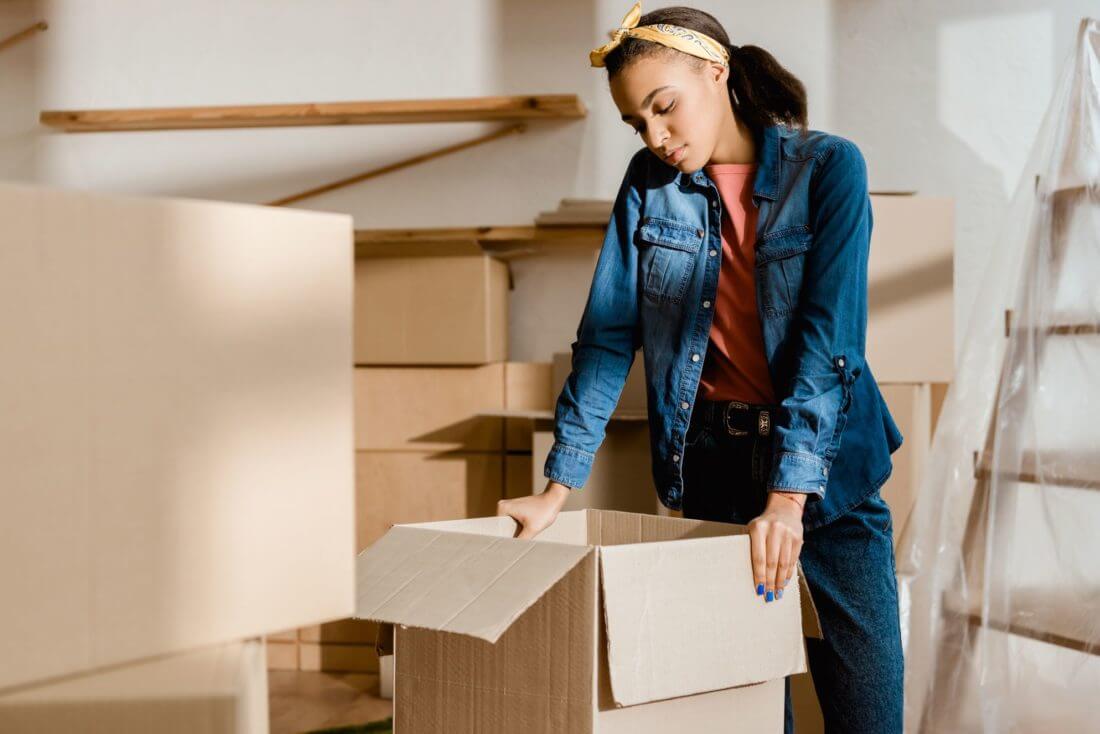

How Long Should it Take to Unpack After Moving?
The timeline of how to unpack can also last as long as you want it to, but no longer than that. Ensure you’ve put the most important things in place and unpacked each box within the first two weeks. It’s impossible to do it all in one day, but it’s also not realistic to waste a whole month or longer on it, especially if you relocated to another state alone and don’t have a ton of cargo for unloading.
Something else to note before relocating if you’re doing it alone (or otherwise) – browse “long-distance movers near me” and hire professionals to help you pack, but also to unbox. Their packaging services can help the move to become easier and faster. Because they also handle the furniture and all of the logistics around it, that could shorten the period of unboxing, and you’ll have the basics set up immediately. Simply relocating with the help of movers will shorten every bit of the process by a mile.
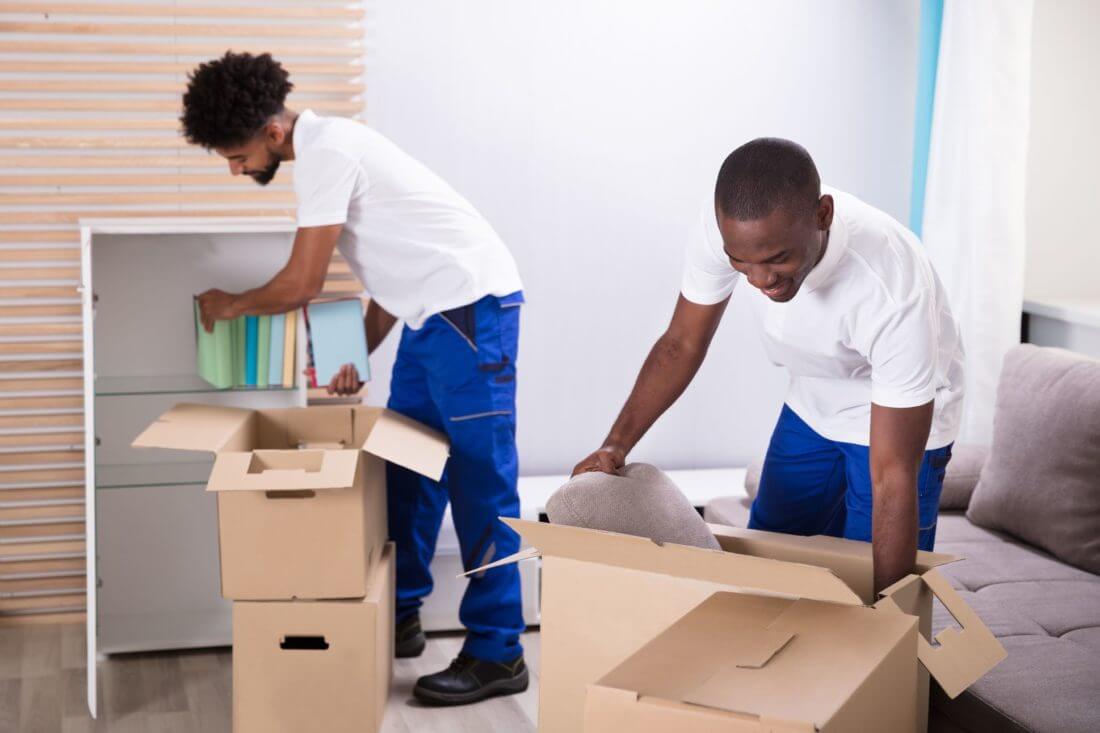

Your Furniture and Cargo Can Be Handled by Professional Long-Distance Movers
As we already mentioned, getting in touch with a cross-country moving company will be a great help and ensure you have it easier during the first few weeks of relocating. In addition to everything we mentioned about their relocation, storage, and packaging services, there are many other perks. More than anything, they’ll help you sort out your life day by day by assisting you in the unboxing process, too. They’ll ship your car for you, too. It’s simply easier and faster when you hire professional movers.
The last of our tips is to look at how you can make friends in a new city to fit in better, and another thing to research is how to stop getting mail from previous residents, which is bound to annoy you sooner than later. Hopefully, you’ve settled and created a timeline for the unboxing process so that everything works out much sooner and you can begin living the lifestyle you want.
FAQ
Where Do I Begin When Unpacking After a Move?
When unpacking after a move, it’s important to start with the essentials first. Locate the boxes containing items you will need immediately, such as toiletries, bedding, and kitchen utensils. Next, tackle the larger items, such as furniture and appliances, starting with the ones you use most frequently. As you unpack, try to create designated areas for different categories of items to make organization easier. Finally, take your time, and don’t feel pressured to unpack everything at once. Set realistic goals for each day and take breaks when needed.
What Is the Best Way to Organize My Unpacking Process?
The best way to organize your unpacking process is to create a plan of attack. Start by prioritizing which rooms or areas of your new home you want to tackle first. Then, focus on unpacking one room or section at a time, working from top to bottom and left to right. It’s helpful to label each box with the room it belongs in and its contents to make it easier to find what you need later. As you unpack, try to get rid of any items you no longer need or want to prevent clutter in your new space. Finally, take breaks as needed, and don’t forget to reward yourself for each completed task.
How Long Should It Take To Unpack After a Move?
The length of time it takes to unpack after a move can vary depending on the size of your home, the number of belongings you have, and your personal organizational style. In general, it can take anywhere from a few days to a few weeks to fully unpack and settle into a new space. It’s important to pace yourself and not feel pressured to unpack everything at once. Prioritize the essentials first and tackle one room or area at a time. Be patient with yourself and take breaks as needed. Ultimately, the goal is to create a comfortable and organized living space that feels like home.
What Are the Essential Items to Unpack First?
The essential items to unpack first are the ones that you’ll need on a daily basis. This includes bedding, toiletries, towels, and clothing. You’ll also want to locate and unpack kitchen essentials such as dishes, glasses, utensils, and cookware. Other important items include any necessary electronics, such as chargers and computers, as well as important documents and paperwork. By prioritizing these items, you’ll be able to create a comfortable and functional living space while taking the time to unpack everything else at your own pace.
Should I Unpack Room by Room or by Item Category?
Both methods, unpacking room by room and unpacking by item category, can be effective depending on your personal preferences and organization style. If you prefer to focus on one area at a time and have a clear vision of how you want each room to be set up, unpacking room by room might be best for you. On the other hand, if you prefer to tackle similar items all at once and want to create designated areas for different categories of items, unpacking by item category might be a better fit. Ultimately, the most important thing is to create a plan that works for you and helps you stay organized throughout the unpacking process.
What Are the Best Unpacking Tips for Reducing Clutter?
Reducing clutter during the unpacking process can be challenging, but there are several tips that can help. First, take the time to declutter before you start unpacking. This means getting rid of any items you no longer need, want, or use. Consider donating or selling items that are still in good condition, and recycle or dispose of items that are broken or no longer functional. Another tip is to avoid holding onto items out of guilt or obligation. Finally, as you unpack, try to create designated areas for different categories of items, such as a donation pile or recycling bin, to help you stay organized and prevent clutter from building up.
How Do I Dispose of Unwanted Items While Unpacking?
There are several ways to dispose of unwanted items while unpacking. If you have items that are still in good condition, consider donating them to a local charity or thrift store. You can also sell items online or have a yard sale. For items that are no longer usable or in poor condition, you can recycle them if possible or dispose of them in the trash. Some cities offer bulky item pick-up services for larger items such as furniture or appliances. Check with your local waste management company for guidelines on how to dispose of different types of items.
How Can I Involve Family Members in the Unpacking Process?
Involving family members in the unpacking process can help make the task feel less overwhelming and more enjoyable. Start by assigning age-appropriate tasks to each family member, such as unpacking their own belongings or helping to set up a specific room. Encourage teamwork and make the process fun by playing music or having snacks on hand. You can also make it into a game by setting a timer and seeing how much each person can unpack in a certain amount of time. Don’t forget to take breaks and celebrate small milestones along the way. By involving everyone in the unpacking process, you’ll be able to create a comfortable and organized living space together.
How Do I Deal With Unpacking Fragile or Valuable Items?
Unpacking fragile or valuable items can be nerve-wracking, but there are several tips that can help. First, make sure you handle these items with care and use appropriate packing materials, such as bubble wrap or packing peanuts. When unpacking, work in a clear and clutter-free area to minimize the risk of damage. If possible, unpack fragile items one at a time and inspect them carefully for any signs of damage. It’s also a good idea to take photos of any valuable items before and after unpacking, in case they get damaged during the move. Finally, consider purchasing additional insurance coverage for any high-value items to provide extra peace of mind.
What Are the Best Ways to Store Items While Unpacking?
Storing items while unpacking can help you stay organized and prevent clutter from building up. One of the best ways to store items is to use clear plastic bins or containers, which allow you to see what’s inside and make it easier to locate specific items later on. Label each container with its contents and the room it belongs in to make it easier to unpack later on. For larger items such as furniture, consider taking them apart if possible and storing the pieces in a designated area to prevent them from getting damaged. It’s also a good idea to store items vertically, such as using a shoe rack for cleaning supplies, to maximize space and keep items easily accessible.
How Do I Handle Unpacking Large Furniture and Appliances?
First, make sure you have the right tools and equipment on hand, such as a dolly or hand truck, to help move heavy items. If possible, enlist the help of friends or family members to assist with unpacking and moving these items. Before unpacking, inspect each item for any signs of damage or wear and tear, and take photos for reference. When moving large items, use caution and be mindful of any obstacles or narrow passages that could make the process more difficult. Finally, prioritize setting up the largest and most important items first, such as your bed or refrigerator, to help you feel more settled in your new home.
What Are Some Helpful Tools or Equipment for Unpacking?
One of the most essential tools is a box cutter or pair of scissors, which can be used to open boxes and cut through packing tape. Other useful tools include a dolly or hand truck for moving heavy items, a step stool or ladder for reaching high shelves, and a measuring tape to ensure that furniture and appliances fit in their designated spaces. Label makers and sticky notes can also be helpful for organizing and labeling boxes and containers. Finally, music or a podcast can help make the unpacking process more enjoyable and keep you motivated.
How Can I Make the Unpacking Process More Efficient?
Making the unpacking process more efficient requires a combination of planning, organization, and prioritization. Start by creating a plan for which rooms or areas you want to tackle first, and set realistic goals for each day. As you unpack, create designated areas for different categories of items to make organization easier. Prioritize unpacking essential items first, such as bedding, toiletries, and kitchen utensils. Use clear plastic bins or containers to store items and label them with their contents and the room they belong in. Finally, enlist the help of family or friends if possible, and take breaks as needed to prevent burnout.
What Should I Do if I Can’t Finish Unpacking in One Day?
It’s common to not be able to finish unpacking in one day, especially if you have a large number of belongings or a busy schedule. If this happens, prioritize finishing essential tasks first, such as setting up your bed and unpacking items you’ll need for the next day. Create a plan for which tasks you want to tackle next and set realistic goals for each day. Try to focus on one area or room at a time to prevent feeling overwhelmed. It’s also important to take breaks and not push yourself too hard. Finally, don’t be afraid to ask for help if you need it. Remember that the unpacking process is a marathon, not a sprint, and it’s okay to take your time to make your new space feel like home.
How Can I Celebrate and Reward Myself After Completing the Unpacking Process?
Celebrating and rewarding yourself after completing the unpacking process can help you feel a sense of accomplishment and make the process more enjoyable. One way to celebrate is to have a housewarming party or invite friends and family over to see your new space. You could also treat yourself to a nice meal or a relaxing activity, such as a massage or a day trip. Consider purchasing a small gift or item for your new home as a reward for your hard work. Finally, take some time to enjoy your new space and appreciate all the hard work you put in to make it feel like home.





